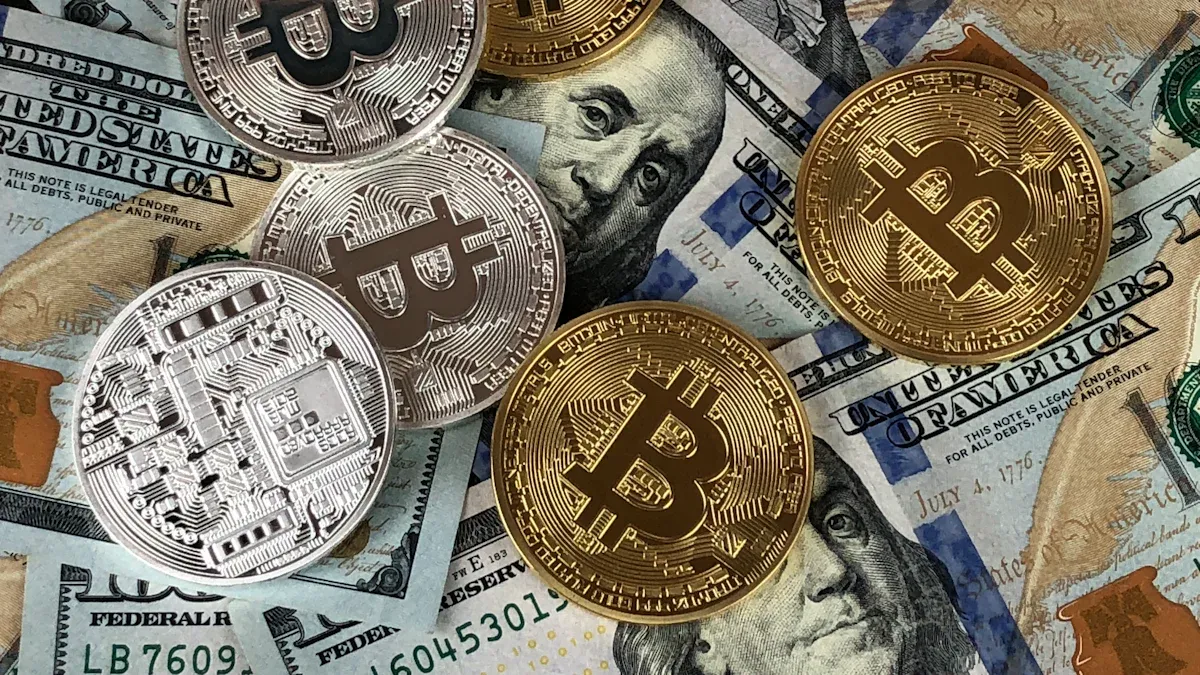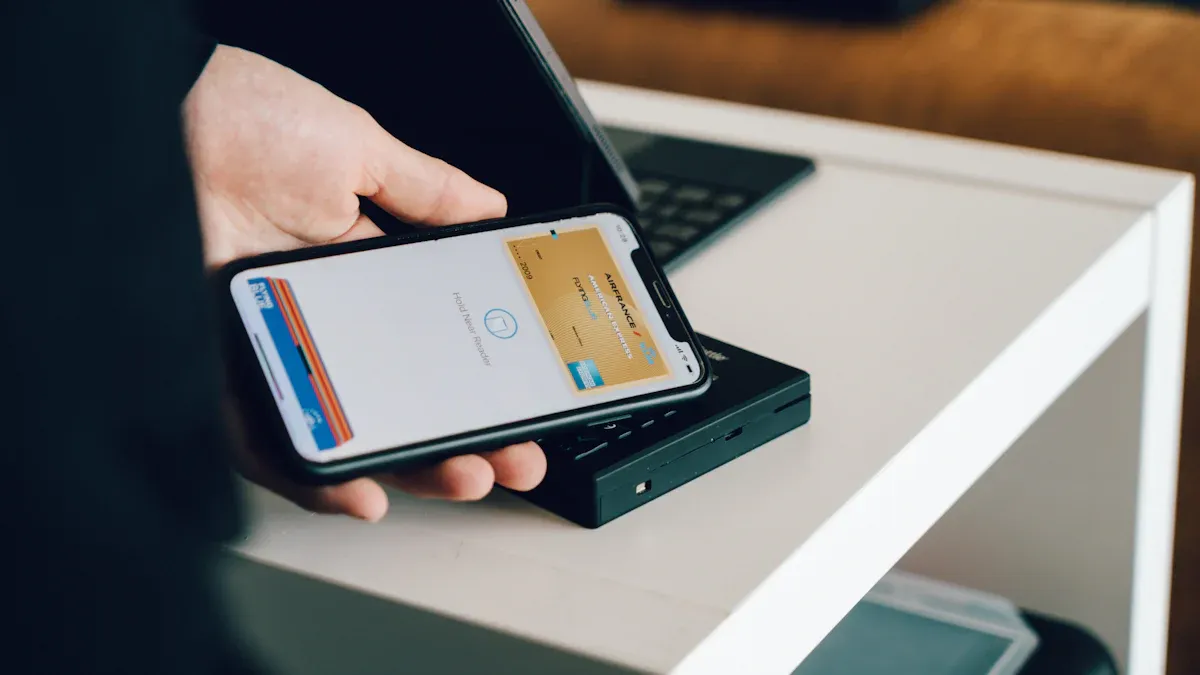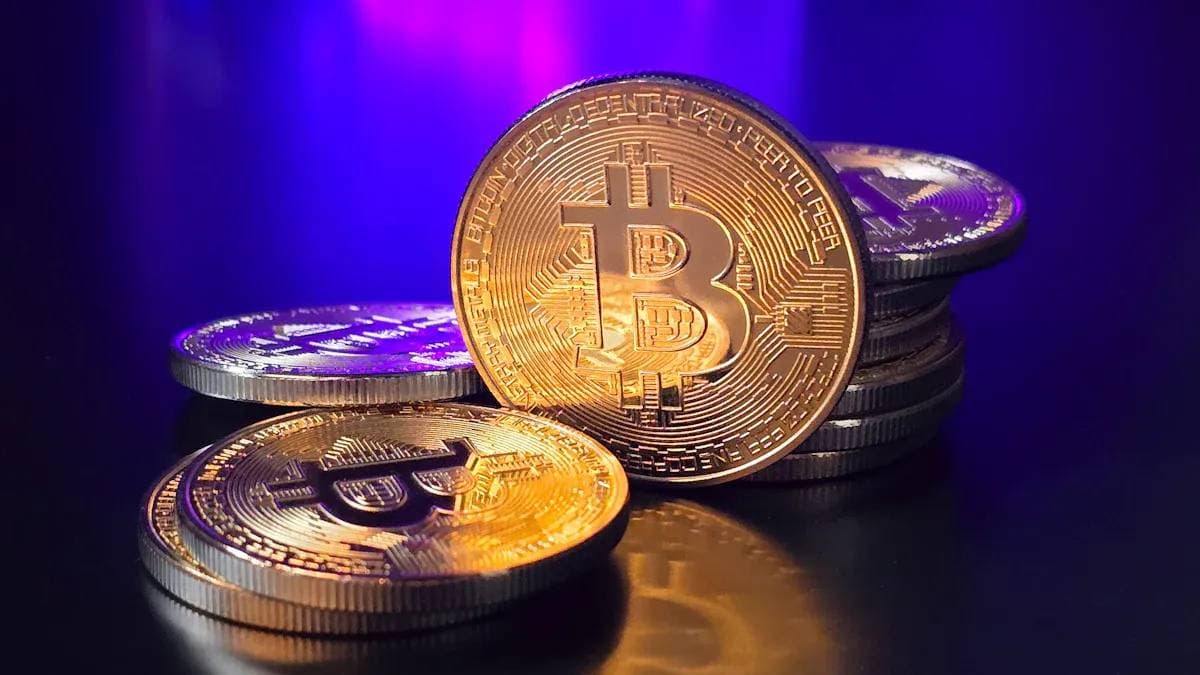- EasyCard
- Trade
- Help
- Announcement
- Academy
- SWIFT Code
- Iban Number
- Referral
- Customer Service
- Blog
- Creator
As Simple as Getting Change: New Experience with Stablecoin (USDT) Remittances

Image Source: unsplash
Have you ever been troubled by the high fees and long waits of traditional cross-border remittances?
Explore a brand-new remittance method. Stablecoin (USDT) remittances not only save you approximately 3%-5% in costs but also achieve near-real-time fund arrival.
This “nanny-level” tutorial will break down the operation process in detail, allowing you to easily get started and safely exchange USDT into funds in your bank account.
Key Takeaways
- USDT remittances are cheaper and faster than traditional bank remittances, saving 3% to 5% in fees, with funds arriving almost in real time.
- Conducting USDT remittances requires three steps: first acquire USDT and a digital wallet, then initiate USDT transfer, and finally exchange USDT for bank funds through a compliant platform.
- Choose the TRC20 network for USDT transfers because its fees are low (about 1-2 USD) and speed is fast (seconds to 1 minute).
- When conducting USDT transfers, be sure to carefully verify the receiving address and network type to prevent fund loss; also beware of various scam risks.
- Choosing regulated platforms with proof of reserves and reputable P2P merchants can ensure your fund safety.
Cost and Efficiency Advantages of USDT Remittances

Image Source: pexels
Traditional remittance fees are often like a “black box,” including various hidden costs. Stablecoin (USDT) remittances provide a more transparent and economical choice. Let’s intuitively compare them.
Remittance Fee Structure Comparison
Traditional bank wire transfer fees usually consist of three parts:
- Bank fees: Fixed fees charged by sending and receiving banks.
- Correspondent Bank Fees: When funds transit internationally, passing banks may charge layer by layer.
- Exchange Rate Spread: The exchange rate provided by banks is usually worse than the market real-time rate; this spread is the bank’s profit, usually between 1.0% to 3.0%.
In contrast, USDT transfer cost structure is very simple, mainly the “miner fee” (Gas Fee) paid to the blockchain network. If you use the TRC20 network, this fee usually only needs about 1-2 USD, without correspondent banks or exchange rate spread troubles.
For clearer understanding, see the comparison table below:
| Item | Traditional Bank Wire | USDT Remittance (TRC20 Network) |
|---|---|---|
| Handling Fee | Charged both ways by sending and receiving banks | Only one-time network fee |
| Correspondent Bank Fee | May occur, about 15-50 USD | None |
| Exchange Rate Spread Cost | Common, about 1%-3% | None, USDT near 1:1 peg with USD |
| Total Cost | Higher, usually 3%-5% of total | Extremely low, usually below 0.2% |
Example: Suppose you need to remit 1,000 USD. Using traditional wire transfer, you may pay: $20 (sending fee) + $15 (correspondent/receiving fee) + $20 (2% exchange spread), total cost about $55. Using USDT, your cost is only a one-time network fee, about $2. The cost difference is clear.
7x24 Hour Instant Arrival Convenience
Traditional banking systems are limited by business hours and holidays. An international remittance usually takes 1-5 business days to arrive; if encountering weekends or holidays, wait time is longer.
Blockchain networks are completely different; they run 24/7 year-round without interruption. This means you can initiate transfers anytime, and the other party receives funds in minutes, truly achieving “instant arrival.” This efficiency is crucial for time-sensitive payments (such as paying overseas employee salaries or emergency purchases), completely bidding farewell to long waits due to bank closures.
Stablecoin (USDT) Remittances: Three-Step Practical Guide

Image Source: unsplash
Now, you understand the huge advantages of USDT remittances. Next, let’s enter the practical phase. You only need to follow these three simple steps to easily complete the entire remittance process.
Step One: Acquire USDT and Digital Wallet
The first step of operation is to prepare your “digital assets” and “digital wallet.”
First, you need to buy USDT on a mainstream digital currency trading platform. After purchase, the next step is to transfer these USDT to a digital wallet you control to ensure absolute asset safety.
A non-custodial wallet means the private key and seed phrase are fully held by you; no one can touch your assets. For storing USDT on the TRC20 network, consider these highly rated options:
- TronLink: As the official partner wallet of Tron, it integrates perfectly with the TRON network, ideal for handling TRC20 USDT.
- Klever Wallet: Known for its simple design and extremely fast transaction speed, with convenient built-in exchange function.
- imToken: A multi-chain wallet emphasizing bank-level security, passed strict security audits, suitable for users with extremely high security requirements.
Safety First: Backup Your “Wallet Key” When creating a wallet, the system generates a “seed phrase” consisting of 12 or 24 words. This seed phrase is your wallet’s highest authority, equivalent to the only key to your bank safe.
- Immediately after creating the wallet, go to settings for manual backup.
- Accurately copy all seed words with paper and pen, strictly in order.
- Store this paper in an absolutely safe, hidden place, such as a safe.
- Never screenshot, photograph, or store seed words on any networked device, and never share with anyone.
Step Two: Initiate USDT Transfer Operation
After owning a wallet and depositing USDT, you can start transferring. This process is as simple as sending an email.
- Copy Receiving Address: Have the recipient provide their USDT wallet receiving address. To ensure foolproof, be sure to confirm the other party provides a TRC20 network address. TRC20 addresses usually start with uppercase “T.”
- Initiate Transfer: In your wallet or trading platform, choose “Send” or “Withdraw” function.
- Fill Transfer Information:
- Paste the recipient’s address into the “Receiving Address” field. Strongly recommend using “Scan QR Code” function to avoid manual input errors.
- Choose transfer network as TRON (TRC20).
- Enter the USDT amount you wish to transfer.
- Final Confirmation: Before clicking “Confirm,” double-check address and network again. Wrong network or address will cause permanent fund loss.
- Wait for Confirmation: After submitting transfer, you get a transaction ID (also called TxID or Hash). You can copy this ID to a blockchain explorer like
Tronscan.orgto query transaction status. When status shows “Confirmed,” the other party has successfully received funds.
Beginner Tip: Conduct Small Test If transferring to a new address for the first time, strongly recommend sending a small amount first (e.g., 5 USDT) for testing. After confirming successful receipt, transfer the remaining large amount. This simple step helps avoid major losses due to mistakes.
Step Three: Receipt and Multiple Cash-Out Methods
When your recipient receives USDT, the last step is to safely and conveniently exchange these digital assets into fiat currency (such as USD) in the bank account, usually called “cash-out.”
The traditional cash-out method is through the trading platform’s C2C/P2P market, directly selling USDT to other users. However, this method has certain risks, especially in some jurisdictions where receiving bank accounts may be frozen due to unknown fund sources.
To avoid these risks, we recommend using a more modern and compliant path.
Advanced Cash-Out Path: Safe Withdrawal via Compliant Platform
Currently, global remittance platforms like BiyaPay provide a perfect solution. It acts as a bridge between the digital world and traditional banking system, making the last mile of stablecoin (USDT) remittances smooth.
The operation process is very clear:
- Register and Verify Account: Register an account on BiyaPay with your email and complete identity verification as required.
- Deposit USDT: Deposit USDT from your wallet to your BiyaPay account via TRC20 network.
- 1:1 Exchange to USD: In BiyaPay’s “Instant Exchange” function, exchange USDT to USD in real time at near 1:1 rate.
- Withdraw to Bank Account: Directly remit exchanged USD to your or recipient’s pre-bound bank account, such as Wise or OCBC.
The biggest advantage of this method is that funds are processed through the compliant platform’s internal clearing system before entering your bank account, greatly reducing the risk of bank account risk control or freezing. The entire stablecoin (USDT) remittance process thus forms a safe closed loop.
Additionally, tools like Myfin on the market provide similar services, offering you diverse choices. You can choose the most suitable platform based on your needs and location.
Key Techniques and Risk Prevention for Safe Remittances
After mastering the operation methods, the next step is to learn how to protect your funds. Although USDT remittances are efficient and convenient, the digital world also has risks. Following these key techniques, you can complete each transaction safely like a professional.
Choose the Correct Transfer Network (TRC20)
USDT exists on multiple different blockchain networks; you can think of them as different highways. Choosing which “highway” directly determines your transfer fees and speed. Currently, mainstream networks include TRON (TRC20), Ethereum (ERC20), and Omni.
For daily remittances, we strongly recommend using the TRC20 network. The reasons are very intuitive: it combines extremely low costs and extremely fast speeds.
See the clear comparison table below for a glance:
| Network | Transaction Speed | Transaction Completion Time | Basic Transfer Fee (Approx.) |
|---|---|---|---|
| TRC20 | Fastest (about 2,000 TPS) | Seconds to 1 minute | $1 - $2 |
| ERC20 | Slower (about 15-30 TPS) | 5 minutes - hours (during congestion) | $5 - $20 (or higher) |
| Omni | Slowest | 10 minutes or longer | Higher than TRC20 |
Why TRC20 is a Wise Choice?
TRC20 network, with its overwhelming advantages, has become the preferred choice for small to medium remittances.
- Ultimate Cost-Effectiveness: TRC20 transfer fees are usually $1-$2, compared to ERC20 network often $5-$20, saving you over 90% in costs. Whether paying $200 freelancer salary or small business purchases, TRC20 is highly attractive.
- Lightning-Fast Arrival Speed: Transactions confirm in seconds, completely bidding farewell to long waits during Ethereum network congestion. This speed advantage makes it ideal for daily payments and business transactions needing instant confirmation.
Therefore, when initiating or receiving USDT, be sure to confirm with the other party to uniformly use the TRC20 network.
Prevent Address Errors and Scam Risks
In the digital world, transfers cannot be revoked once sent. Therefore, preventing address errors and identifying scams are core skills you must master.
1. Beware of “Address Error” as the Biggest Trap
- Network Incompatibility Causes Asset Loss: TRC20 and ERC20 are two completely independent “highways.” If you send TRC20 USDT to an ERC20 address (usually starting with “0x”), these funds will most likely be permanently lost. Be sure to ensure sending and receiving network types exactly match.
- Beware of “Clipboard Hijacking” Malware**: This is a very covert attack. When you copy a wallet address, malware lurking on your device instantly replaces it with the scammer’s address. If you do not carefully verify before pasting and transferring, funds go directly to the scammer. This attack is also called “address poisoning.”
Address Operation Safety Checklist
- Cross-Verification: After getting the address from the other party, confirm accuracy again via a second channel (such as voice call or video).
- Careful Verification: Before clicking “Send,” verify the pasted address character by character, especially the first and last few digits.
- Use Hardware Wallet: Hardware wallets like Ledger or Trezor display and require confirmation of the address on their own screen, effectively preventing clipboard hijacking on computers.
- Stay Vigilant: Never download software from unknown sources or click suspicious links; regularly scan your device with antivirus software.
2. Identify and Avoid Common USDT Scams
Scammers’ methods are endless but follow patterns, mostly exploiting human greed and trust. Beware of these typical scams:
- Fake Investment Platforms: Scammers create very professional-looking trading websites or Apps, luring you to deposit USDT with promises of “high returns” and “guaranteed profits.” These platforms may even fake profit data; when you want to withdraw, they disappear or set obstacles.
- “Pig Butchering” and Emotional Scams: Scammers build emotional or business trust via social networks, then “casually” introduce a fake cryptocurrency investment opportunity. They guide small investments with “profits”; after large investments, they abscond with funds.
- Phishing Websites: Scammers make fake websites identical to well-known exchanges or wallets. If you visit and enter username, password, or private key, your account is immediately emptied.
Select Reliable Trading Platforms and Merchants
Your fund safety largely depends on the counterparties you choose. Whether large trading platforms or individual merchants in P2P markets, careful selection is needed.
1. How to Evaluate a Trading Platform?
A reliable platform is not just smooth in experience but has strong security and transparency. Focus on these points:
- Regulation and Compliance: Does the platform hold financial licenses from authoritative institutions (such as US MSB license)? This means it operates under a compliance framework and is legally bound.
- Proof of Reserves (PoR): This is a mechanism to show the public it holds enough assets to cover all user deposits. Platforms regularly publishing PoR reports have higher transparency and trustworthiness.
- Security Audits and Financial Audits: Does the platform regularly undergo penetration testing and code audits by third-party security firms? Does it publish audited financial statements? These are important indicators of overall financial health and security level.
2. How to Select Trustworthy P2P Merchants?
If choosing P2P market trading, it’s like dealing with strangers. The platform’s protection mechanisms and merchant reputation are crucial.
- Use Platform Escrow Service: All mainstream P2P platforms provide escrow. When buying USDT, the seller’s coins are temporarily locked by the platform. Only after you pay and seller confirms, the platform releases coins to you. This mechanism effectively prevents non-delivery after payment.
- Review Merchant Reputation Profile: Before trading with any merchant, spend a minute checking their profile:
- Trade History: See how many transactions they completed.
- Completion Rate: A high rate (such as over 98%) usually means good reputation.
- User Reviews: Carefully read feedback from other users; beware merchants with many negative comments.
- Identity Verification (KYC): Choose “Verified Merchants” who completed advanced platform verification; their identity is verified by the platform, more trustworthy.
By developing these safety habits, you can maximize protection of your digital assets while enjoying the convenience of USDT remittances.
Stablecoin (USDT) remittances open a efficient, low-cost global payment new door for you. It shortens traditional days of waiting to minutes and significantly reduces fees. We encourage you to start with small amounts (e.g., 5 USD) to personally experience the full process from purchase to receipt.
Remember, crypto markets have price fluctuations; you must understand and comply with local and destination laws and regulations. Before operating, do thorough research to ensure every transaction is safe and compliant.
FAQ
Is USDT Always 1:1 with USD?
USDT is pegged to USD, but market fluctuations cause slight price floats. It is usually very close to 1:1 but not absolutely fixed. You will see real-time exchange rates during transactions.
What If I Transfer USDT to the Wrong Address?
Blockchain transfers cannot be revoked. Once funds are sent to the wrong address, recovery is almost impossible. Therefore, repeatedly verifying the address before transfer is crucial. This simple step protects your funds.
Can I Use Networks Other Than TRC20?
Yes, but we do not recommend. For example, ERC20 network fees are far higher than TRC20, sometimes 10 times more. To save costs and ensure speed, TRC20 is the best choice for small remittances.
Is Using USDT for Remittances Legal?
Laws on digital currencies vary by country and region. You are responsible for understanding and complying with relevant laws in your location and the recipient’s. Before operating, do thorough research to ensure compliance.
*This article is provided for general information purposes and does not constitute legal, tax or other professional advice from BiyaPay or its subsidiaries and its affiliates, and it is not intended as a substitute for obtaining advice from a financial advisor or any other professional.
We make no representations, warranties or warranties, express or implied, as to the accuracy, completeness or timeliness of the contents of this publication.




Contact Us
Company and Team
BiyaPay Products
Customer Services
BIYA GLOBAL LLC is a licensed entity registered with the U.S. Securities and Exchange Commission (SEC No.: 802-127417); a certified member of the Financial Industry Regulatory Authority (FINRA) (Central Registration Depository CRD No.: 325027); regulated by the Financial Industry Regulatory Authority (FINRA) and the U.S. Securities and Exchange Commission (SEC).
BIYA GLOBAL LLC is registered with the Financial Crimes Enforcement Network (FinCEN), an agency under the U.S. Department of the Treasury, as a Money Services Business (MSB), with registration number 31000218637349, and regulated by the Financial Crimes Enforcement Network (FinCEN).
BIYA GLOBAL LIMITED is a registered Financial Service Provider (FSP) in New Zealand, with registration number FSP1007221, and is also a registered member of the Financial Services Complaints Limited (FSCL), an independent dispute resolution scheme in New Zealand.



















